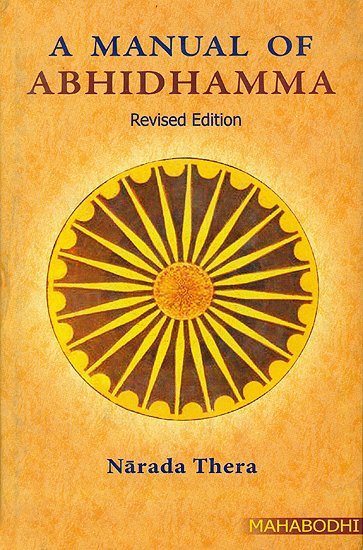A Manual of Abhidhamma
by Nārada Thera | 80,494 words | ISBN-13: 9789380336510
In the Abhidhammattha Sangaha there is a brief exposition of the Law of Dependent Origination, followed by a descriptive account of the Causal Relations that finds no parallel in any other philosophy. Edited in the original Pali Text with English Translation and Explanatory Notes by Narada Maha Thera....
Introduction
In the 89 types of consciousness, enumerated in the first chapter, 52 mental states arise in varying degree.
There are 7 concomitants common to every consciousness. There are 6 others that may or may not arise in each and every consciousness. They are termed Pakinnakā (Particulars).
All these 13 are designated aññasamāna, a rather peculiar technical term. Añña means 'other', samana means 'common'. Sobhanas, (Good), when compared with asobhanas (Evil,) are called añña - 'other', being of the opposite category. So are the asobhanas in contradistinction to Sobhanas.
These 13 become moral or immoral according to the type of consciousness in which they occur.
- 14 concomitants are variably found in every type of immoral consciousness.
- 19 are common to all types of moral consciousness.
- 6 other moral concomitants occur as occasion arises.
Thus these fifty-two (7 + 6 + 14 + 19 + 6 = 52) are found in the respective types of consciousness in different proportions.
In this chapter all the 52 mental states are enumerated and classified. Every type of consciousness is microscopically analyzed, and the accompanying mental states are given in detail. The type of consciousness in which each mental state occurs, is also described.
To an impatient lay reader this chapter will appear rather dry and uninteresting. To a critical and intelligent reader it will, on the contrary, serve as an intellectual treat.
At the outset, for instance, a student of chemistry may find the numerous chemical formulas somewhat perplexing. But he finds the subject interesting and edifying, when he seriously attempts to analyze and examine the various substances with different tests.
In like manner a student of Abhidhamma who reads this chapter should first try to analyze and examine care fully every type of consciousness and see for himself the mental states thereof according to his own reasoning. Later, he should compare his results with the original text. He will then find this chapter most illuminating, and instead of wasting time in memorizing numbers, he will intelligently grasp the meaning of the text.
For example, let us analyze the first immoral type of consciousness, rooted in attachment.
- Somanassa-sahagata - Accompanied by pleasure,
- Ditthigata-sampayutta - Connected with misbelief,
- Asankhārika - Unprompted.
This consciousness, when analyzed, will show that the vedanā or feeling is pleasure'.
The 7 Universals and all the Particulars are found in it.
The 4 Immoral mental states common to all immorals such as:
- moha (delusion),
- ahirika (shamelessness),
- anottappa, (fearlessness),
- uddhacca (restlessness)
must arise in it.
What about the remaining ten?
- Lobha - attachment must arise.
- Ditthi - misbelief must arise.
- Māna - conceit cannot arise.
Conceit does not arise in lobha consciousness, together with misbelief. Ditthi is connected with wrong view, while māna is concerned with egoism. Both of them, say the commentators, are like two lions that cannot live together in one cave.
- Dosa (hatred),
- issā (envy),
- macchariya (avarice),
- kukkucca (brooding)
cannot arise, because these four are akin to aversion. They are found only in hateful consciousness.
Thīna and middha - (sloth and torpor) do not arise because this is an unprompted consciousness.
No sobhanas - (beautiful) occur in an immoral consciousness.
Total - 7 + 6 + 4 + 2 = 19.
Thus, on analysis, we see that the first immoral consciousness consists of 19 mental states.
The other types of consciousness should be similarly analyzed.
